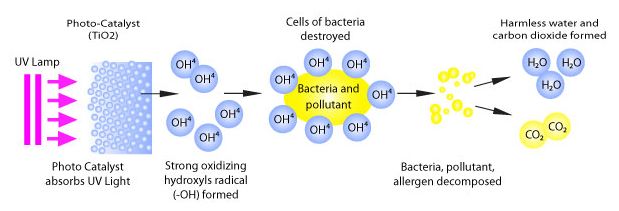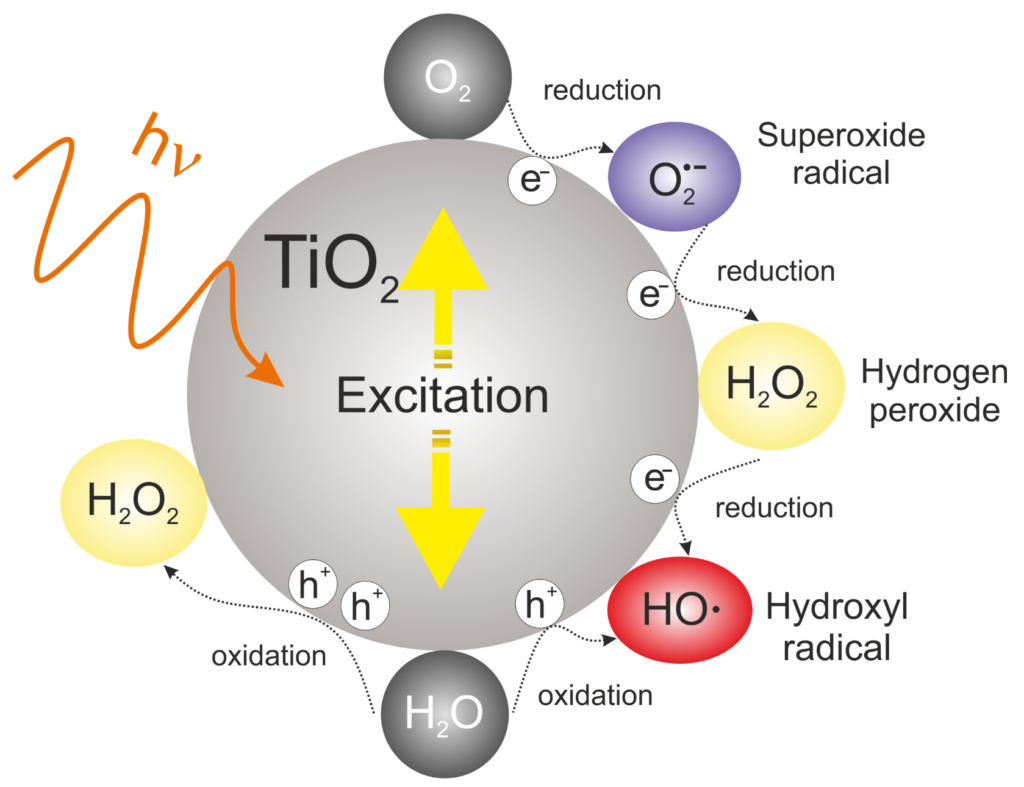About Photocatalysis
What is a Photocatalyst?
A photocatalyst is a substance that uses light energy to facilitate a
chemical reaction. Titanium dioxide (TiO2) is a photocatalyst. When
exposed to enough ultraviolet (UV) light, titanium dioxide can induce the
transformation of harmful substances and toxic compounds into benign
constituents such carbon dioxide (CO2) and water (H2O).
Mechanism of Photocatalysis


When photocatalyst titanium dioxide absorbs UV radiation from sunlight
or an illuminated light source (fluorescent lamps), it will produce
pairs of electrons and holes.
The electron of the valence band of titanium dioxide becomes excited
when illuminated by light. The excess energy of this excited electron
promotes the electron to the conduction band of titanium dioxide
thereby creating the negative-electron (e-) and positive-hole (h+)
pair. This stage is referred to as the semiconductor’s
‘photo-excitation’ state. The energy difference between the valence
band and the conduction band is known as the ‘ Band Gap’.
The positive-hole of titanium dioxide breaks apart the water molecule to
form hydrogen gas and hydroxyl radical (-OH). The negative-electron reacts
with oxygen molecule to form a superoxide anion (-O2). These elements
oxidise volatile organic compounds (VOC’s) such as formaldehyde, carbon
monoxide, nitrous oxide, ammonia and septic system odours adsorbed on the
catalyst surface. They will also eliminate and decompose airborne
pathogens like bacteria, viruses and mould.